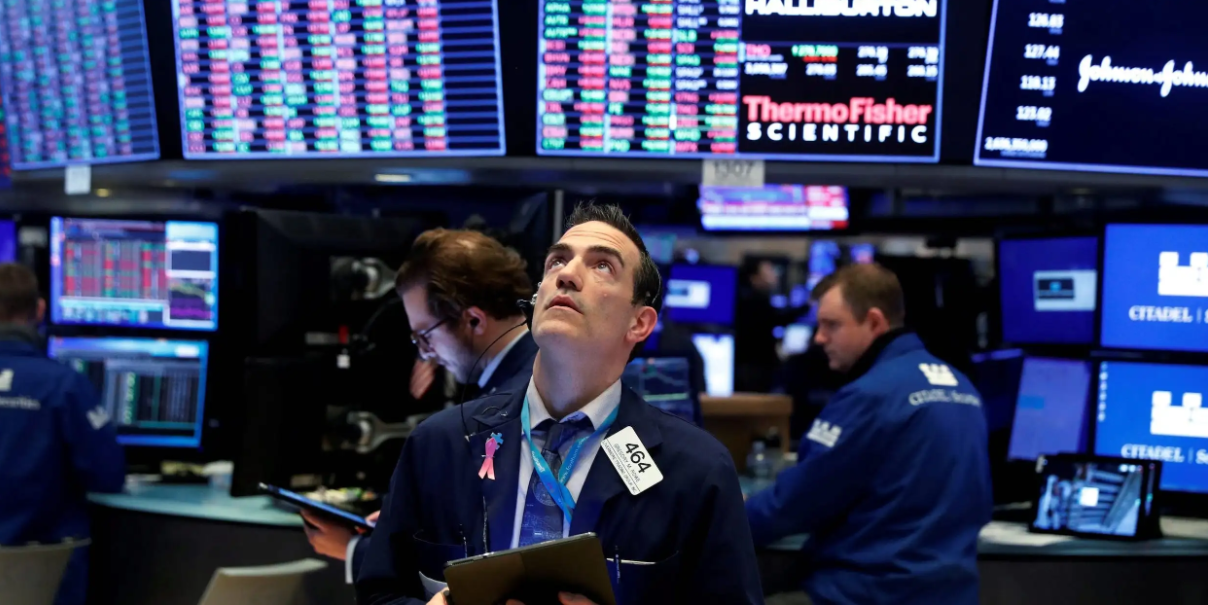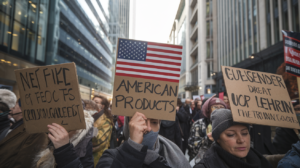Stock Market Volatility Soars as Trade War & Tariff Hikes Rattle U.S. Investors, disrupting Wall Street and shaking investor confidence across America. With major indices like the S&P 500 and Nasdaq plunging sharply this April, many are wondering what’s causing the turbulence—and what lies ahead for the U.S. economy.
Let’s break it down clearly, explain what’s happening, and help readers truly understand each major element affecting today’s market.
What Is Causing the Sudden Stock Market Volatility?
In recent weeks, the U.S. government has imposed significant new tariffs on over $300 billion in Chinese imports, raising rates as high as 145% on select goods. These aggressive moves triggered immediate retaliation from China, sparking a new wave of trade tensions.
Volatility surged as a direct reaction to:
- Rising costs of imports
- Corporate earnings uncertainty
- Global supply chain disruptions
- Deteriorating U.S.-China diplomatic ties
This kind of unpredictable political and economic behavior leads investors to panic, often causing rapid market sell-offs.
The Real Impact on U.S. Markets and Investors
Markets responded swiftly and negatively:
- S&P 500 fell by 11.3% in two days
- Nasdaq dropped by 12.1%, the steepest two-day drop since 2020
- Dow Jones Industrial Average declined nearly 1,000 points
These numbers show how quickly investor confidence can erode in reaction to global instability.
A major concern is that import-reliant industries—like tech, retail, and automotive—face rising costs and reduced earnings. That’s because tariffs act like an invisible tax, raising the price of goods and shrinking profit margins.
Comparing Past Trade Disruptions and 2025 Market Behavior
To put the current crisis into perspective, here’s a table comparing past U.S. trade wars and their market impacts:
Past vs. Present Stock Volatility
| Trade War Period | Major Cause | Market Reaction | Duration | Result on U.S. Economy |
|---|---|---|---|---|
| 2018–2019 (Trump-China) | First U.S. tariffs on China | S&P dropped 7%, temporary volatility | 8 months | Minor slowdown, quick recovery |
| 2020 (COVID Panic) | Pandemic lockdown | S&P crashed 34% in a month | 3 months | Deep recession, long recovery |
| 2025 (Current) | Tariff hikes + China retaliation | S&P drops 11.3% in 2 days | Ongoing | Global economic uncertainty |
Unlike 2018, this 2025 situation is broader in scope, more sudden, and hitting at a time when inflation and debt concerns already exist.
How Are Top Financial Institutions Responding?
Wall Street giants like Goldman Sachs, JPMorgan, and Citibank have all downgraded their Q2 forecasts. According to an official Goldman Sachs statement:
“Trade instability creates material downside risk for major U.S. sectors, particularly those dependent on foreign inputs.”
As a result, many institutional investors are pulling capital from riskier assets and reallocating to Treasury bonds, gold, and cash. Hedge funds are also shorting tech stocks, which are especially sensitive to global supply disruptions.
Which Sectors Are Most at Risk from Tariffs?
Some industries are more exposed than others. Here’s a clear breakdown:
Key U.S. Sectors Affected by Tariffs
- Technology: Heavy reliance on Chinese semiconductors and circuit boards
- Retail: Clothing, electronics, and appliances see rising costs
- Automotive: Higher prices for imported steel, aluminum, and parts
- Agriculture: Retaliatory tariffs on soy, corn, and beef reduce exports
- Manufacturing: Costs surge for raw materials, driving inflation
U.S. small businesses that depend on imported parts or overseas manufacturing are especially vulnerable. Rising prices mean lower customer demand and squeezed profit margins.
What Should U.S. Investors Do Right Now?
Financial advisors are urging retail investors to stay calm but strategic. Key steps include:
- Avoid panic selling unless your portfolio is overly exposed to risk
- Diversify into defensive sectors like healthcare, utilities, or consumer staples
- Increase holdings in cash equivalents or U.S. Treasury securities
- Monitor economic indicators such as CPI, GDP, and unemployment rates
- Follow trade news and White House policy developments closely
Remember, most economic downturns are temporary, and markets have always recovered historically.
Could This Lead to a U.S. Recession?
While a full-blown recession is not guaranteed, the risks are increasing.
The International Monetary Fund (IMF) now forecasts:
- U.S. GDP growth slowing to 1.2% in 2025
- Global growth could fall by up to 0.9% annually if trade wars continue
- Consumer inflation in the U.S. could rise above 4%, especially on imported goods
Many economists argue that if tariffs remain in place through Q4 2025, consumer confidence will erode, and small business closures may increase.
Key Takeaways – What This Means for the American Public
Stock market volatility may sound like a Wall Street issue, but its ripple effect hits everyday Americans:
- 401(k) plans lose value during sell-offs
- Consumer goods become more expensive
- Job losses may occur in industries affected by global trade
- Mortgage and credit markets tighten due to broader economic fear
Summary & What to Watch in the Coming Weeks
Markets are watching for:
- Any sign of U.S.-China diplomatic resolution
- Updates from the Federal Reserve on interest rate adjustments
- Earnings reports from affected U.S. companies
- Continued consumer behavior shifts caused by inflation
Conclusion: Navigating a Volatile Financial Future
In 2025, the American investor faces a crossroads. With tariffs disrupting global trade and market sentiment falling, stock market volatility is now an unavoidable reality. Whether you’re a seasoned trader or a cautious 401(k) contributor, understanding what’s at stake helps make better decisions.
If the current trade climate stabilizes, markets may rebound by mid-year. But if tensions persist or escalate, expect continued market shocks, slowed economic growth, and a long period of uncertainty.
The best defense is knowledge, diversification, and staying updated with trustworthy financial reporting.
[USnewsSphere.com / gs]





